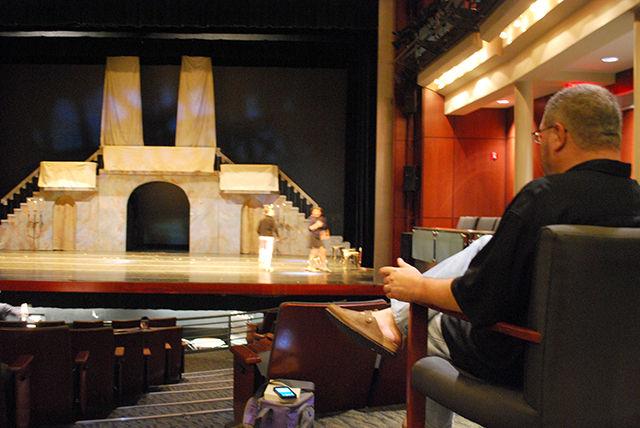The Carolina Ballet’s presentation of Dracula, a two-part ballet that includes a pieces inspired by stories written by Bram Stoker and Edgar Allen Poe, will run until Oct. 26 in Raleigh’s Fletcher Opera Theater, features the original music compositions of NC State Art and Design Professor J. Mark Scearce.
“There’s something inherent in Mark’s writing that I’ve always been attracted to as a performer, whether I’m singing or conducting,” said Al Sturgis, musical director of Carolina Ballet and conductor of Dracula.
The show features two performances inspired by the stories Dracula by Bram Stoker and The Masque of the Red Death by Edgar Allen Poe.
Dracula was written around the cimbalom, a large Hungarian instrument played with two hammers, Scearce said.
“The minute you hear that, it sounds like Transylvania because it’s from that part of the world,” Scearce said.
Since the Dracula piece was fairly short, The Masque of the Red Death was added to make the show more complete.
“Dracula is more of a story, so it obviously has the dramatic element of the actor that’s on stage, and you have pantomime and you have scene changes and things like that,” Sturgis said. “I think Masque [of the Red Death] is more pure balletic and Dracula is more ballet quasi theater.”
The Masque of the Red Death involves party goers wandering through different colored rooms, so the choreography and music for this portion of the show were based on color. The music was inspired partially by color theory and color psychology, Scearce said.
“The music should make you feel like that’s perfect for blue because it evokes blue,” Scearce said.
The show goes against the regimented, 400-year-old history of ballet. The idea of using the story of Dracula, having a narrator on stage, and having elements of musical theater make this show unique for ballet, Scearce said.
Working with dance can be very different than working only with instrumental orchestra, Sturgis said.
“Dance is very collaborative,” Sturgis said. “It’s the conductor’s responsibility to involve himself or herself in the process very early to find out what the dancer’s needs are on stage. I would compare it to if you’re conducting or accompanying a singer and you’re concerned with breath.”
Sturgis used to conduct the choral program at NC State but always wanted to conduct more than just choirs, Scearce said.
“He wanted to conduct orchestras and ballet so he did the big brave thing and became an independent conductor,” Scearce said.








